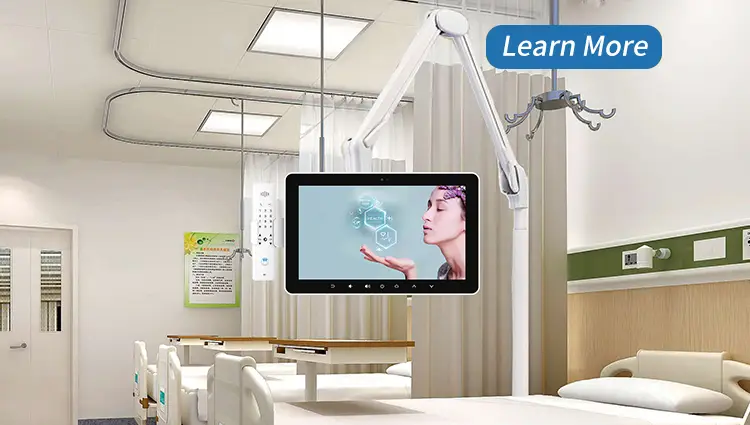In modern healthcare settings, the integration of specialized medical computers is pivotal. These advanced systems support critical operations, patient care, and data management, ensuring hospitals run efficiently and safely. This guide explores the stringent requirements for medical computers in hospital environments, offering a detailed analysis for healthcare professionals, IT managers, and decision-makers.
Key Requirements for Medical Computers in Hospitals
1. Compliance with Medical Standards and Regulations
Medical computers must adhere to strict regulatory standards to ensure patient safety and data integrity. Key regulations include:
- IEC 60601-1 Certification: Ensures electrical safety in medical environments.
- HIPAA Compliance: Protects patient data and ensures privacy.
- FDA Approval: Validates the computer for use in specific medical applications.
Compliance with these standards guarantees that the computers are safe for use in sensitive hospital environments and can securely handle patient information.
2. Robust Data Security Measures
With the rise of cyber threats, data security is paramount in healthcare. Medical computers must feature:
- Encryption: To protect data during transfer and storage.
- Secure Boot and TPM (Trusted Platform Module): For verifying the integrity of the system’s startup process.
- Access Controls: Role-based access ensures only authorized personnel can access sensitive data.
These measures prevent unauthorized access and safeguard patient data against breaches.
3. Enhanced Durability and Reliability
Medical computers must withstand the demanding hospital environment. Key features include:
- Fanless Design: Reduces dust accumulation and the risk of airborne contamination.
- Rugged Construction: Withstands physical impacts, vibrations, and spills.
- Long Lifespan Components: Ensures reliability over extended use, reducing downtime and maintenance.
Durability ensures continuous operation even in harsh conditions, maintaining the efficiency of hospital workflows.
4. Advanced Connectivity Options
Seamless connectivity is essential for integrating medical computers with various hospital systems. Necessary connectivity options include:
- Wi-Fi 6 and Ethernet Ports: For reliable and fast network connections.
- Bluetooth: Enables wireless connections to peripheral devices.
- Serial and USB Ports: Support a range of medical devices and sensors.
These connectivity options ensure compatibility with hospital infrastructure and facilitate real-time data exchange.
5. User-Friendly Interfaces
User-friendly interfaces enhance usability for medical staff. Important aspects include:
- Touchscreens: Intuitive interaction, even with gloves on.
- Customizable Software: Tailors the interface to specific medical applications and user needs.
- High-Resolution Displays: Provides clear and accurate visuals, essential for diagnostic tasks.
A well-designed interface minimizes user errors and enhances the efficiency of medical procedures.
Diagram: Connectivity in Medical Computers
mermaid graph LR
A[Medical Computer] --> B[Wi-Fi 6]
A --> C[Ethernet]
A --> D[Bluetooth]
A --> E[Serial Port]
A --> F[USB Port]
B --> G[Hospital Network]
C --> G
D --> H[Peripheral Devices]
E --> I[Medical Devices]
F --> I
Specialized Features for Hospital Environments
1. Infection Control and Hygiene
Medical computers must facilitate infection control practices. Features include:
- Antimicrobial Coatings: Reduce the risk of bacterial contamination.
- Sealed Enclosures: Prevents ingress of liquids and contaminants.
- Easy-to-Clean Surfaces: Allows for thorough disinfection between uses.
These features are critical in maintaining sterile environments and preventing hospital-acquired infections.
2. High Performance and Compatibility
Performance is crucial for handling complex medical applications. Key specifications include:
- Powerful Processors: Supports demanding applications such as imaging and electronic health records (EHR).
- Ample RAM and Storage: Facilitates multitasking and large data storage.
- Compatibility with Medical Software: Ensures seamless integration with EHR systems and diagnostic tools.
High performance ensures that medical staff can rely on the computers for accurate and efficient operations.
3. Energy Efficiency
Energy-efficient medical computers contribute to hospital sustainability efforts. Features include:
- Low Power Consumption Components: Reduces energy use and heat generation.
- Power Management Settings: Automatically adjusts power use based on workload.
- Energy Star Certification: Indicates compliance with energy efficiency standards.
Energy efficiency helps in reducing operational costs and the hospital’s carbon footprint.
Case Studies: Implementing Medical Computers
1. Case Study: Improving Patient Care with EHR Integration
Hospital: City Medical Center
Challenge: Slow, outdated computers were hindering the use of EHR systems, affecting patient care.
Solution: Integration of new medical computers with enhanced processing power and reliable connectivity.
Outcome: Improved speed and accuracy in accessing and updating patient records, leading to better patient care and workflow efficiency.
2. Case Study: Enhancing Diagnostic Capabilities
Hospital: Regional Health Services
Challenge: Diagnostic procedures required high-performance computing for imaging software.
Solution: Deployment of medical computers with advanced GPUs and high-resolution displays.
Outcome: Enhanced imaging quality and faster processing times, improving diagnostic accuracy and patient outcomes.
Conclusion
The selection of medical computers for hospital environments requires careful consideration of compliance, security, durability, connectivity, and usability. By integrating robust, secure, and user-friendly systems, hospitals can improve patient care, enhance operational efficiency, and ensure data integrity. This guide serves as a comprehensive resource for understanding and implementing the necessary requirements for medical computers in hospitals, helping to navigate the complexities of modern healthcare technology.

